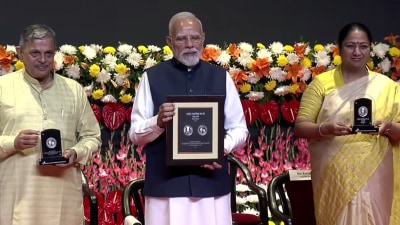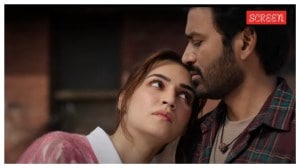Rich Like Them
Nayantara Sahgal has taken off her genteel gloves, and socked us in the solar plexus with a book which, in scope and stature, literally take...

Nayantara Sahgal has taken off her genteel gloves, and socked us in the solar plexus with a book which, in scope and stature, literally takes our breath away. Combining history and fiction in a contemporary cocktail is a tough act — more so when the novel not only delves into acrimonious issues such as the partition of India, but unveils dissonance in prevailing “sacrosanct” ideologies, such as non-violence, and religious fundamentalism, legacies we grapple with till today.
The reader is advised the line of least resistance as Sahgal’s novel grabs you by the eyeballs and hunkers you along through a tumultuous century of pre and post-Independence India, maintaining a steady cadence of finely tuned words.
As part of India’s first family, Sahgal had a natural advantage in being privy to the making of history. But over the years she has hewed out for herself a firm place in Indian literature, and especially in her recent writings as she has ventured far beyond only the myths and realities of being an Indian woman. Lesser Breeds is self-assured, confident writing from an author who explores a wide canvas and shares her pain over dissipated dreams.
The novel opens in Akabarabad, centred around Nurullah, an illiterate child of a twelve-year-old, who had died in childbirth after a short, tortured existence. Significantly, Nurullah struggles into the social world, adopted by various patrons, and gradually emerges as a disillusioned teacher of English literature, urging his students to rebel against the British and grooming them for revolt with the words of the classic British poets.
Lesser Breeds is richly ironic in these moments and, very reassuringly, comic as well. While beguiling us into her many-layered world, Sahgal flourishes forth the irresistible singer “Chappan Churi”, so named as not only is she a legendary femme fatale, she also has 56 nicks on her well-endowed frame from her possessive lover. We also meet the blood-drained Mrs Crik who parts her legs for the British bank manager, as he prayerfully sinks onto his knees between them, in an attitude of “namaz”; and we encounter Otto Schelling, the opera addict, who wanders in a state of perpetual arousal generated by a nubile exotic Indian.
On a more serious note are present, shorn of all pretence, the rampantly racist politics of the Raj and the slaughter of innocents in Gandhi’s call for non-violence. However, Sahgal plays no role in building mythology; hers is rather the uncanny ability to spot the unlikely and serve it as fact. The double-speak of governments, the rebellion within non-violence, the colonial patriarchy — she defines the palimpsest.
Can ideologies sustain the assault of new leadership or even time? Was colonial rule truly surrogate? Sahgal’s book raises these questions more definitively in the novel’s first half, “Company Bagh”. But she reinforces these messages in the second part, “An Island Called America”, when, chillingly, thirty years after Hitler, the plea for racial purity is from an Indian. As one of the characters, Leda, thinks, “The clock had a way of going forward and then back. There would always be a fanatic at the fair.”
Within the novel, there is a constant sense of foreboding… as in a description of Jinnah’s desire for a separate country: “For Mussalman’s Only when his home had always been a luxurious villa in cosmopolitan Bombay… It could be that as a Khoja disciple of the Aga Khan, a wealthy gentleman who spent his time on the French Riviera and married foreign wives, Jinnah Sahib needed to prove himself more of a proper Mussalman. History had others like him whose hankering for more identity than they were born with had endangered life and limb on a colossal scale. Napoleon had been born Corsican and Hitler Austrian.”
The “profound pessimism” prevailing in the book is an ominous reflection of today’s India, and much welcome is the wisdom with which the novel is written: it could have only come from a keen observer of the politics of life.



- 01
- 02
- 03
- 04
- 05




























